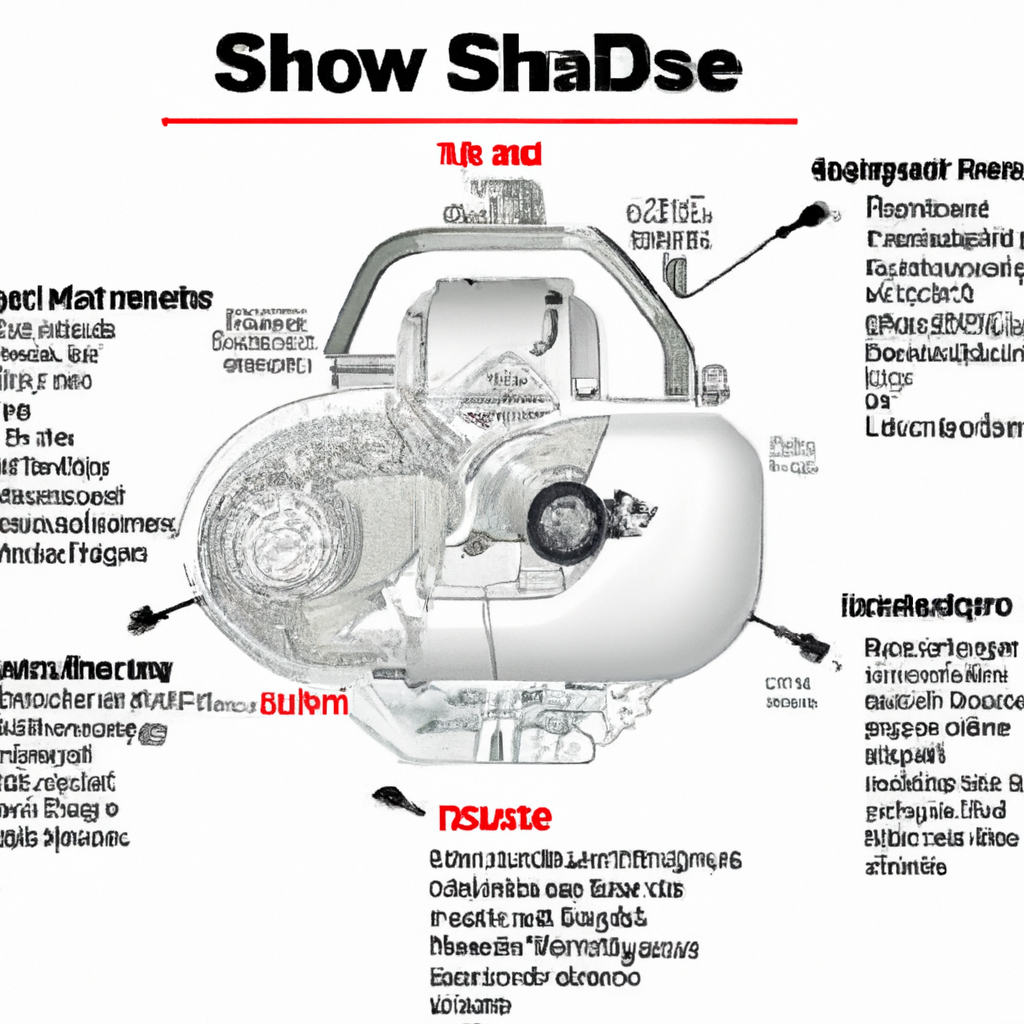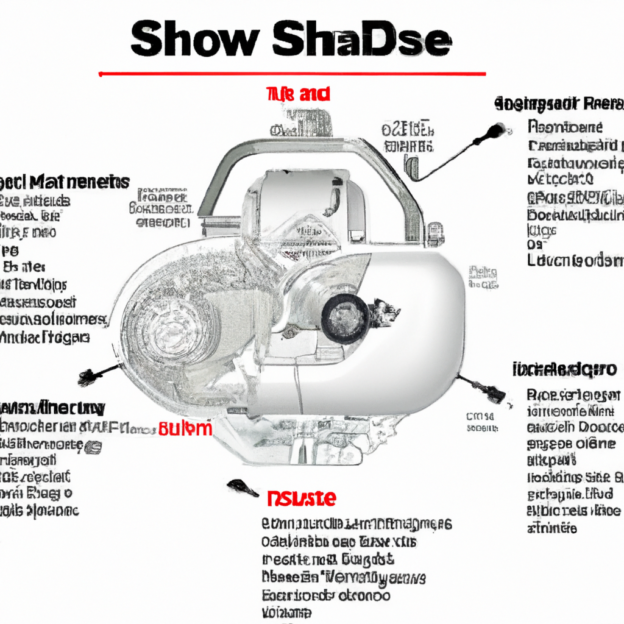Let’s talk snowblower engines! If you’ve ever found yourself in a never-ending debate about the merits of a 2-cycle versus a 4-cycle engine, you’ve come to the right place. You may be wondering, what exactly is the difference between the two? Well, get ready to find out as we dive into the world of snowblower engines and unravel their inner workings.

Operation
How a 2-cycle engine works
A 2-cycle engine, also known as a two-stroke engine, operates on a simple principle. It completes a power cycle in just two strokes: the compression stroke and the combustion/exhaust stroke. This means that for every rotation of the engine’s crankshaft, a power stroke is produced. The combustion process is achieved by a fuel-oil mixture which is combined in the engine. The mixture enters the combustion chamber where it is ignited, producing the necessary power to drive the engine. The exhaust gases are then expelled out of the engine during the exhaust stroke.
How a 4-cycle engine works
A 4-cycle engine, on the other hand, is also known as a four-stroke engine. It follows a more complex operational process, completed in four strokes: intake, compression, combustion, and exhaust. The first stroke is the intake stroke, where the engine’s piston moves downward, allowing a mixture of air and fuel to enter the combustion chamber through an intake valve. In the next stroke, the piston moves back upward, compressing the air-fuel mixture. As the piston reaches the top, the spark plug ignites the compressed mixture, creating a combustion event. This forces the piston back down during the power stroke. Finally, the piston moves back up one more time to push the exhaust gases out through an exhaust valve during the exhaust stroke.
Fuel and Oil Mix
Fuel-oil mixture for 2-cycle engines
In a 2-cycle engine, the fuel and oil are mixed together before being introduced into the engine. Typically, a specific ratio of fuel to oil is required for proper lubrication and combustion. Common ratios for 2-cycle engines range from 20:1 to 50:1, depending on the manufacturer’s recommendations. It is crucial to maintain the correct ratio to ensure optimal engine performance and longevity. This means carefully measuring and mixing the fuel and oil in a separate container before filling the engine’s fuel tank.
Separate fuel and oil for 4-cycle engines
In contrast, 4-cycle engines use separate fuel and oil systems. The fuel, typically gasoline, is poured directly into the fuel tank, while the oil is stored in a separate crankcase. The oil is circulated throughout the engine using an oil pump, providing lubrication to various components such as the piston, crankshaft, and valves. This separation of fuel and oil helps to regulate lubrication more precisely and reduces the need for manually mixing fuel and oil.
Starting Mechanism
Pull-start for 2-cycle engines
Two-stroke engines are commonly equipped with a pull-start mechanism. This involves manually pulling a starter cord that is connected to a recoil spring and the engine’s crankshaft. As the cord is pulled, the recoil spring is tensioned, storing energy. When released, the spring rapidly rotates the engine’s crankshaft, initiating the first stroke and starting the engine. Pull-start systems are relatively simple and reliable, requiring minimal maintenance.
Pull or electric-start for 4-cycle engines
Four-stroke engines offer more starting options. They can be equipped with a pull-start mechanism similar to 2-cycle engines, where the recoil spring is used to start the engine with a manual pull. Additionally, many 4-cycle engines also feature electric-start systems. These systems use an electric motor, powered by a battery, to turn the engine’s crankshaft and initiate the starting process. Electric start offers the convenience of starting the engine with the push of a button, eliminating the need for manual pulling.
Lubrication
Oil mixed with fuel for 2-cycle engines
One of the critical aspects of 2-cycle engine operation is the lubrication process. As mentioned earlier, the fuel and oil are mixed together, and this mixture serves both as fuel and lubrication. The oil coats the moving parts of the engine, such as the piston and crankshaft, reducing friction and preventing excessive wear. This method of lubrication requires consistent monitoring of the fuel-oil mixture to prevent engine damage caused by insufficient lubrication. It’s essential to follow the manufacturer’s recommendations for the correct oil type and ratio to ensure optimal performance and longevity.
Oil in a separate crankcase for 4-cycle engines
Four-stroke engines have a more advanced lubrication system. The engine’s crankcase contains oil that is specifically designed for lubricating the engine’s internal components. The oil is pumped to various parts of the engine, ensuring proper lubrication as the engine operates. This system provides better control over the lubrication process and eliminates the need for mixing fuel and oil. Regular oil changes are necessary to maintain the engine’s performance and prevent excessive wear.
Maintenance
Regular oil and fuel mix checks for 2-cycle engines
To keep a 2-cycle engine running smoothly, regular maintenance is essential. This includes checking and adjusting the fuel-oil mixture regularly. It is crucial to maintain the correct ratio for proper lubrication and combustion. Additionally, the air filter should be cleaned or replaced periodically to ensure proper airflow and prevent engine damage. Spark plugs and other small engine components may also require routine maintenance to ensure efficient operation.
Oil changes for 4-cycle engines
4-cycle engines require regular oil changes to maintain their performance and prevent engine damage. The engine oil becomes contaminated over time, losing its lubricating properties and becoming less effective at reducing friction. The frequency of oil changes depends on the engine’s usage, but a general guideline is to change the oil every 25-50 hours of operation or at least once a year. Additionally, regular maintenance should include checks and replacements of the air filter, spark plug, and other components as recommended by the manufacturer.
Power Output
Higher power-to-weight ratio in 2-cycle engines
One advantage of 2-cycle engines is their higher power-to-weight ratio compared to 4-cycle engines. Due to the simpler design and fewer moving parts, 2-cycle engines can deliver more power in relation to their size and weight. This makes them an excellent choice for applications where lightweight and compact engines are desirable, such as handheld equipment like chainsaws and trimmers.
More torque in 4-cycle engines
While 2-cycle engines excel in power-to-weight ratio, 4-cycle engines offer more torque. Torque is the rotational force generated by the engine, and it is essential for tasks that require the engine to exert greater pulling or pushing force. The additional stroke in 4-cycle engines allows for a longer time dedicated to intake and compression, resulting in higher torque output. This makes 4-cycle engines better suited for heavier equipment, such as lawnmowers and snowblowers.
Emissions
Higher emissions in 2-cycle engines
One significant drawback of 2-cycle engines is their higher emissions compared to 4-cycle engines. The combustion process in 2-cycle engines is less efficient, and a portion of the fuel-oil mixture is not fully burned, resulting in higher levels of hydrocarbon and carbon monoxide emissions. These emissions contribute to air pollution and have stricter regulations for certain applications. It is crucial to use 2-cycle engines in well-ventilated areas and follow local regulations to minimize their environmental impact.
Lower emissions in 4-cycle engines
4-cycle engines, on the other hand, produce lower emissions due to their more efficient combustion process. The separate intake and exhaust strokes allow for better control over fuel combustion, resulting in reduced levels of unburned fuel and pollutants. This is particularly important in applications that require compliance with emission standards, such as lawnmowers and vehicles. 4-cycle engines are generally considered more environmentally friendly and are preferred where emissions regulations are stricter.
Noise Level
Louder operation in 2-cycle engines
2-cycle engines tend to be louder during operation compared to their 4-cycle counterparts. This is partly due to the high RPM (revolutions per minute) at which 2-cycle engines operate, producing more noise. Additionally, the combustion process in 2-cycle engines is not as controlled as in 4-cycle engines, leading to more rapid and louder exhaust noise. While modern 2-cycle engines have made significant advancements in noise reduction, they still generally produce more noise than 4-cycle engines.
Quieter operation in 4-cycle engines
4-cycle engines, with their smoother and more controlled combustion process, offer quieter operation. The separate intake and exhaust strokes allow for more effective noise suppression, reducing the overall noise level produced during engine operation. This makes 4-cycle engines preferable in applications where noise reduction is desired, such as residential areas or noise-sensitive environments.
Efficiency
Less fuel-efficient in 2-cycle engines
Due to their design, 2-cycle engines are generally less fuel-efficient compared to 4-cycle engines. A portion of the fuel-oil mixture in 2-cycle engines is lost during the combustion process, resulting in reduced overall fuel efficiency. This means 2-cycle engines consume more fuel to produce the same amount of work compared to 4-cycle engines. However, the high power-to-weight ratio of 2-cycle engines can still make them efficient in certain applications where their lightweight and compact design outweigh their fuel efficiency drawbacks.
More fuel-efficient in 4-cycle engines
4-cycle engines, with their more controlled and efficient combustion process, offer better fuel efficiency. The separate intake and exhaust strokes allow for improved combustion and less wasted fuel. This means that 4-cycle engines can do more work with less fuel consumption, making them more economical in the long run. Their higher torque output also contributes to improved fuel efficiency, as less strain is placed on the engine to perform tasks.
Application
Commonly used in handheld or small equipment
2-cycle engines are commonly used in handheld or small equipment due to their lightweight and compact design. Examples include chainsaws, leaf blowers, trimmers, and portable generators. The high power-to-weight ratio of 2-cycle engines makes them suitable for these applications, as they provide ample power while remaining lightweight and easy to maneuver. The ability to mix fuel and oil together adds to their convenience in these portable and often outdoor settings.
Commonly used in larger equipment
4-cycle engines are commonly found in larger equipment that requires higher torque output. This includes lawnmowers, snowblowers, tillers, and larger generators. The additional torque provided by 4-cycle engines allows them to handle heavier workloads and effectively power larger equipment. Their better fuel efficiency and lower emissions also make them suitable for applications where regulations may be stricter, such as residential or commercial areas.
In conclusion, the difference between a 2-cycle and 4-cycle engine lies in their operational processes, fuel-oil mixtures, starting mechanisms, lubrication methods, maintenance requirements, power outputs, emissions, noise levels, efficiency, and application areas. Understanding these differences can help you choose the most suitable engine for your specific needs, whether it’s a handheld tool or a larger piece of equipment. Consider factors such as power-to-weight ratio, torque, fuel efficiency, emissions regulations, noise level, and the intended application to make an informed decision.
